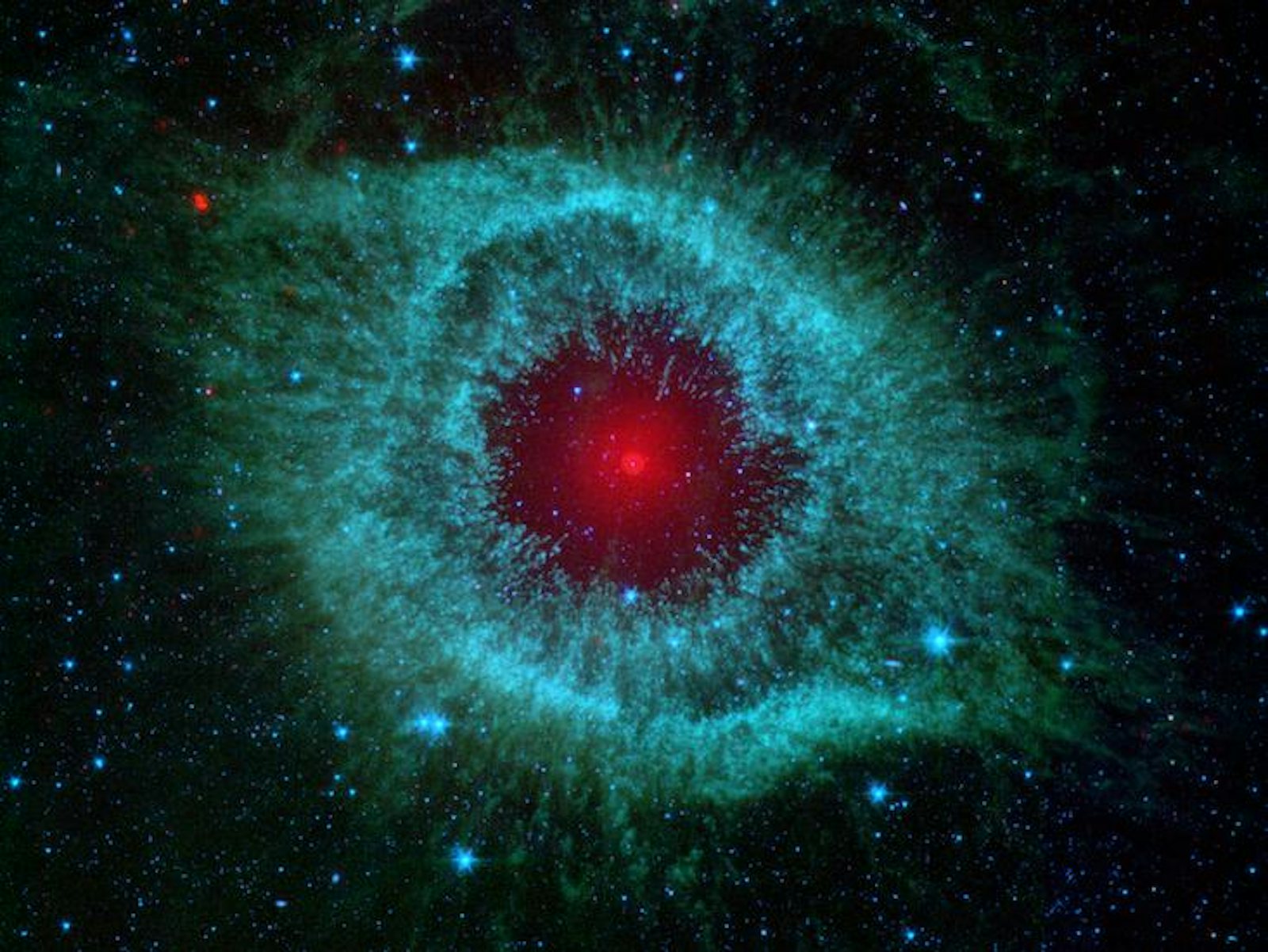Family Physics” may be the best episode of Public Radio’s long running show, This American Life. Its premise was simple. Import key concepts from the realms of quantum mechanics and cosmology and use them to illuminate the everyday world of parents, kids, and their interactions. Introducing the show, however, host Ira Glass was quick to point out how much physicists detest this kind of enterprise. “They hate it when non-scientists … apply principles from physics to their petty little lives and petty little relationships.” Glass was equally quick to point out that he and his colleagues at the show just did not care. As he put it, “Once physicists name something the ‘mediocrity principle’ or the ‘uncertainty principle’ or the ‘grandfather paradox,’ well … they’re just asking for it.”
Glass had a point.
The names we physicists bequeath our cosmic laws sometimes resonate with the more mundane, everyday struggles everyone has making sense of everyday life. There is a deep well of humor to be tapped in using “cosmic mediocrity” to sum up a bad day.
But in some cases, the nomenclature we physicists choose reaches below just the everyday. In those cases it touches something much deeper in the collective basement of shared human culture. Sometimes the collision between physics and the cultural unconscious drops us into vast landscapes of the mythic. Nowhere is the cross-pollination more potent than the discovery of the Dark Universe.
Dark matter strikes a nerve. The question then becomes, why?
While some point to galaxy cluster work by Fritz Zwicky in the 1930s, dark matter was truly “discovered” in the 1970s by Vera Rubin, who was studying the rotation of spiral galaxies. Rubin found that galaxies were spinning too fast for the matter we could see in them, yet they weren’t flying apart. Rubin’s work left astronomers with a choice: Either our laws of gravity were wrong, or there was something else out there pulling on the galaxy’s stars and speeding them up while keeping them together. Since physicists had already invested a few centuries on their theories of gravity, few of them signed up for the first conclusion. In that way the astrophysical community moved en mass toward the second idea: There was another kind of stuff out there we couldn’t see that was exerting a gravitational force on the stuff we could see.
This “other” stuff could have been called “invisible matter.” It could have been called “unseen matter.” It could have been called lot things but, instead, the name astronomers settled on for their mystery was “dark matter.” The rest is a cultural history where, as Ira Glass says, we astronomers were just asking for it.
The Wikipedia page for “Dark Matter in Fiction” lists 47 entrees. That’s a lot. The bulk of this list is, however, science fiction stories. That’s where you would expect an idea as rich as most of the Universe existing in some other form to get picked up. What that list doesn’t include though is Dark Matter Productions, a theater company in New York that, in its own words, “takes pride in shining a light on under-served, and frequently difficult, subject matter.” The Wiki-list also doesn’t include Dark Matter, a London puppet theater performance about a character’s descent into dementia. It doesn’t include DARKMATTER, a transgender south-Asian performance art duo also based in New York City. There is also the off-Broadway play Dark Matters and the book Dark Matter about the role of invisibility in theatrical production. There is a chapbook of poems called Dark Matter by Christine Locke-Lim and another by Amy Nelson Smith and another coming out by Robin Morgan. There are numerous non-science fiction works of fiction called Dark Matter and a raft of art exhibits with the Dark Matter title.
One could go on but the point is clear: Dark matter strikes a nerve. The question then becomes, why?
Obviously “Darkness” is an idea with a long and complicated history for human beings. Yes, on one level it simply means the absence of light. But unless you stick strictly to an electromagnetic definition for “the Light,” you’ll find that the phrase is also loaded with connotations reaching much farther and deeper than wiggling electromagnetic fields.
The binary pairing of Darkness and Light is so fundamental to human culture that it has been enshrined in our most important kinds of story: the creation myths. Genesis from the Bible is the ur-example of a creation myth with its “darkness upon the face of the deep.” That unknowing darkness is all that exists until God speaks the Word and there is Light.
And, of course, the Light is Good.
Don’t we all want to climb out of the Darkness and make our way into the Light?
In the Zoroastrian creation myth, for example, the world began with Ahura Mazda, known as the Wise Lord, who lived in the Endless Light. But there was also evil, in the form of Ahriman, living in the realms of Absolute Darkness. When the Wise Lord created the world of humans with all its light, Ahriman refused to give it praise. Instead, he began shaping an army of demons, witches, and monsters to wage war on the light.

Now if this sounds like a backstory for every fantasy, horror, or even science fiction story you’ve ever encountered, that’s no accident. Mythologies like the creation myth of the Zoroastrians are not just old, untrue stories. Instead, as Joesph Campbell and others have shown us, myths are like warehouses of the human imagination. There is a reason why so many myths, from so many different cultures, across so many different eras, tell the same kind of story. It’s because these are stories we can’t help but tell. They are elemental, expressing something elemental about the way humans—all humans in all times—parse their basic experience of the world.
In his famous work The Cooked and The Raw, anthropologist and comparative mythologist Claude Levi-Strauss claimed that the structure of human consciousness locks us into seeing the world in binary pairs. From this perspective, the duality of Dark/Light has to be seen as more than just a statement about electromagnetic energy. Instead, it holds not only the tension between Good and Evil but also of Ignorance and Knowledge. As the 18th century Zen chant in praise of enlightenment puts it, “From Dark Path to Dark Path we’ve wandered in Darkness.” Don’t we all want to climb out of the Darkness and make our way into the Light? Isn’t that why the foundational historical period for modern democracy is called “the Enlightenment”?
We humans are born from mystery and at our end return to it.
Darkness and Light appear in the human imagination on the truest of mythic scales. They are archetypes expressing fundamental tensions every human being encounters. Given that deep root it is, perhaps, not a surprise that astronomers settled on dark matter as the name for their great astronomical mystery. After all, scientists must also reach into the same collective pool of associations when venturing into the undiscovered country of creativity. Now you could counter that “dark matter” just sounds cool, end of story. But the real question then becomes why does it sound cooler than, say, “invisible matter,” or “unseen matter.” I’d argue that because of its fundamental associations with good, evil, mystery, and enlightenment, calling something “dark” is bound to send small shivers down even the most ardent rationalist’s spine.
But words, meanings, and intentions can be a tricky triplet. When an artist names their book of poems Dark Matter, are they explicitly thinking about the binary pairing of Good/Evil or Knowledge/Ignorance. One of the hallmarks of artist expression is that, at its best, it can call on much more subtle incantations of experience. In this way one can imagine how the explicit meanings of dark matter in a scientific setting can find entirely new and creative renderings in paintings, poems, and theater. In a sense these possibilities illustrate the creative power of our mythic storehouses of meaning. We build representations of the world in science and in art that are always forward and backward looking.
So the deeper resonance between a scientific field’s choice of nomenclature and the public’s response seem baked-in when it comes to dark matter. Once you add “dark energy” to the mix, giving us the fact that 95 percent of everything in the Universe comes in “dark” form, the mythic associations only deepen. Should we be so surprised that poets, playwrights, and painters are drawing from this wellspring? Not at all. We humans are born from mystery and at our end return to it. Though science deals with the most specific and technical forms of unknowing at its frontiers, it is an unknowing none the less. We all want a path from Darkness to Light. We all are asking for it.
Adam Frank is a professor of physics and astronomy at the University of Rochester and the author of About Time: Cosmology and Culture at the Twilight of the Big Bang. He co-founded NPR’s “13.7 Cosmos and Culture” blog.
WATCH: Robbert Dijkgraaf, the director of the Institute for Advanced Study, on what nature’s personality might be.

Image credit: NASA Jet Propulsion Laboratory / Flickr.
This article was originally published on Nautilus Cosmos, in February 2017.


























